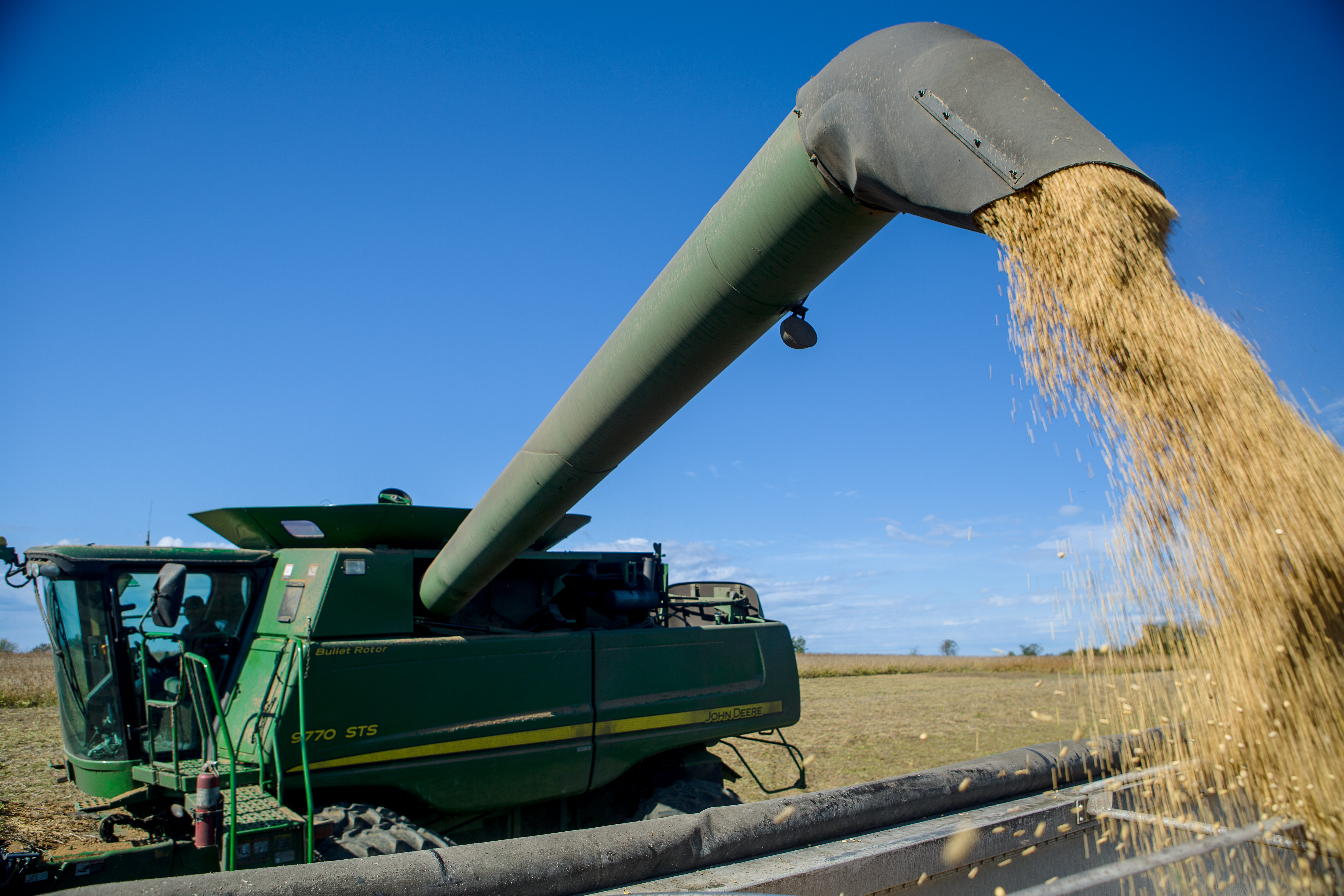Timely soybean harvest is important to maintain yields, quality
Timely soybean harvest is important to maintain yields, quality

Kentucky has experienced a couple weeks of dry weather. As a result, soybean producers need to pay close attention to their crops to make sure they get them out of the field in a timely manner.
“This year’s dry weather is the exact opposite of the wet conditions producers dealt with in fall 2019, and dry weather will push soybeans to mature quicker,” said Sam McNeill, agricultural engineer in the University of Kentucky College of Agriculture, Food and Environment.
The National Agricultural Statistics Service estimates that Kentucky producers will harvest a larger soybean crop this year with total production at 99.4 million bushels of soybeans, up 28% from 2019. Average yields this year are expected to be at 54 bushels per acre compared to 46 bushels per acre last year.
“With tight profit margins, it’s important for producers to take good care of the grain to reduce harvest losses and prevent elevator discounts,” McNeill said.
Soybeans do not have the same plant protections as corn. This causes them to be more exposed to Mother Nature and dry quicker in the field. If the crop loses too much moisture in the field, it can increase the risk of the pods shattering, which reduces yields.
“The goal for producers is to find that sweet spot and harvest soybeans when the grain has a moisture level of 14% or 15% to avoid damaging the seed,” McNeill said. “They can harvest the crop at higher moisture content, if they have some drying capacity.”
Once harvested, McNeill suggests producers dry soybeans to the market moisture of 13% if they plan to store the grain and sell it during the winter. They should dry soybeans to 12% if the market will reward them for the risks of holding the grain until summer to compensate for warmer temperatures and potential grain spoilage.
“With soybean prices currently around $10 per bushel, producers could lose around 11 cents for each point the grain is above or below 13% moisture, and that adds up,” McNeill said. "Soybean moistures above 13% will receive a price discount at grain elevators, and below 13% will simply have excess weight loss."
More information on soybean drying and storage is available in UK extension publication ID 249: A Comprehensive Guide to Soybean Management in Kentucky. It is available online at https://www2.ca.uky.edu/agcomm/pubs/ID/ID249/ID249.pdf or at local offices of the UK Cooperative Extension Service.
